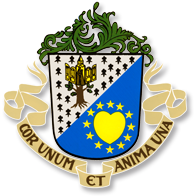 by Silvester ASA, cicm
by Silvester ASA, cicm
General Councilor
“Moral Imagination” has been employed in the worlds of peacebuilding and community organizing since 2005. John-Paul Lederach, a world-renowned authority on peacebuilding, defines moral imagination as the “capacity to imagine something rooted in the challenges of the real world yet capable of giving birth to that which does not yet exist.”1 According to Lederach, an innate ability to weave a web of inclusive relationships is critical to realizing peace in a peaceful realm.2 He furthermore contends that moral imagination reveals itself in boldness and creative fidelity, which contribute significantly to the success of the peacebuilding and change processes.3 Moral imagination is also an artistry of networking and collaboration combined with optimism, patience, courage, creative fidelity, and risk-taking. Surprisingly, as an artistry, moral imagination permits serendipity to play a key part.4
Moral imagination is essential in establishing and maintaining peace. But, in our quest for more constructive community living, I believe we may benefit from Lederach’s marvelous work and appropriate moral imagination. One might reasonably wonder how this relates to CICM community life. To answer this topic, I propose that we look at the terms internationality and multiculturality, which have been commonly used in our everyday language for decades. The fact that we came from many nationalities and cultural groupings demonstrates that we are international and multicultural. This is stated explicitly in Article 1 of the CICM Constitutions, which states that “the Congregation is an international religious missionary Institute.” In 2010, the CICM General Government (GG) published a document titled “Guidelines for Multicultural Living in CICM,” which it hoped would become “a tool that will help all the confreres (to) live better this gift of multicultural character in our dear Congregation.”5 Furthermore, the 15th CICM General Chapter referred to “our universal and multicultural brotherhood” as an efficient way of vocation animation.6 In addition, while assigning formators to Initial Formation Communities, the current GG takes into account internationality and multiculturality.
Internationality and multiculturality have undoubtedly become a part of our everyday life. However, the same may be true of every other place on earth. When you enter an airport like Chicago’s O’Hare, you are surrounded by international and multicultural people. Indeed, we cannot rule out the prospect of an intimate encounter taking place in such a public setting. However, without wishing to pass judgment on anyone, we might estimate that contact among people in such a space is likely to be superficial. For example, you can have a cup of cappuccino at a Starbucks at O’Hare International Airport without having to consider if the coffee beans are fair trade. The love symbol, on the other hand, is prominently visible on the surface of your cappuccino. You also do not have time to wonder if the person pouring you such a rich coffee is a Lakota or a Latin American, European, or Asian immigrant who happens to live on Chicago’s South Side, or “a skinny Black girl descended from slaves and raised by a single mother.”7
But, if you do ask yourself these questions about the social location of the individuals you meet and they lead you to a whole new way of understanding reality and inspire you to behave with empathy and compassion, you may have just crossed the threshold of interculturality owing to your moral imagination. One may be living in an international and multicultural environment where everyone is striving for peaceful coexistence and conflict avoidance at all costs. Internationality and multiculturality are, after all, realities that may be taken for granted. However, in an ideal-typical intercultural setting, everyone strives to “enter a mutually enriching and challenging relationship of understanding, acceptance, and care–to the point of sharing worlds of meaning in the deepest sense–with a person of a culture different from one’s own.”8 Therefore, we would leave our comfort zones in intercultural living to celebrate our diversity and uniqueness and be challenged and enriched by our encounters with holy different others.
“But, if you do ask yourself these questions
about the social location of the individuals you meet
and they lead you to a whole new way
of understanding reality and inspire you
to behave with empathy and compassion,
you may have just crossed the threshold
of interculturality owing to your moral imagination.”
The story of Cleopas and his companion on the road to Emmaus in Luke 24,13-35 exemplifies moral imagination in its purest form. The two despondent disciples could have just ignored the apparently curious stranger and returned to their mundane lives. However, they opted to engage fully with the stranger and let moral imagination take its course. Because of their providential encounter with a stranger on the way, Cleopas and his companion finally understood everything correctly. Whatever the case may be, the truth is undeniably apparent. Our meeting with a stranger, as well as our readiness to use our moral imagination, can help us (re) discover our true calling and deepen our relationship with the risen Lord. The outcome of such an encounter is what is so unique about it. Cleopas and his companion were re-energized by their encounter with the Stranger, who turned out to be none other than the risen Lord, and they rushed back to Jerusalem exuberantly to tell others about it.

CIFA receives the visit of two General Councilors in November 2021 (Cameroon)
Like Cleopas and his companion before their encounter with the resurrected Lord, some of us may get tired of hearing about internationality and multiculturality. But I believe many more are like Cleopas and his companion after their encounter with the risen Lord. Many of us continue to be grateful for our Congregation’s international and multicultural nature despite our flaws. This is only the beginning of the intercultural journey. The open-ended invitation remains for us to let our moral imagination flow freely and let our encounters, with the holy different others, challenge and enrich us mutually. When this time comes, I hope you have just finished your coffee at O’Hare and left a hefty tip for the person who served you. For Christmas pasalubong to your community, don’t forget a pack of andouillette or a bottle of Johnny Walker of any label. Rejoice, for when you get home, your choice of mosselen-friet or Argentinian beef served with Moutarde de Dijon or couscous and okra, complete with bangus and piri-piri sambal, will be waiting for you.
--------------------------------------
1 John Paul Lederach, The Moral Imagination: The Art and Soul of Building Peace (Oxford, NY: Oxford University Press, 2005), p. 29.
2 I am appropriating Eric Law’s terminology, ‘Peaceful Realm.’ Eric H.F. Law, The Wolf Shall Dwell with the Lamb: A Spirituality for Leadership in a Multicultural Community (St. Louis: Missouri, Chalice Press, 1993), p.3.
3 Lederach, The Moral Imagination, p. 5.
4 Lederach, The Moral Imagination, p. 19.
5 CICM, Guidelines for Multicultural Living in CICM (Roma, 2010), p. 3.
6 CICM, Acts of the 15th General Chapter (Roma, 2017), p. 5.
7 Amanda Gorman, “The Hill We Climb,” Amanda Gorman’s inauguration poem, ’The Hill We Climb’ – Harvard Gazette
8 Stephen B. Bevans and Roger P. Schroeder, SVD., Prophetic Dialogue: Reflections on Christian Mission Today (Maryknoll, New York: Orbis Books, 2011), p. 72.








